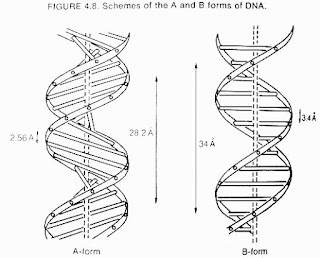 |
| Field of a quadrupole |
http://en.wikipedia.org/wiki/Quadrupole
All known magnetic sources give dipole fields. However, to make a magnetic quadrupole it is possible to place four identical bar magnets perpendicular to each other such that the north pole of one is next to the south of the other. Such a configuration cancels the dipole moment and gives a quadrupole moment, and its field will decrease at large distances faster than that of a dipole.
An example of a magnetic quadrupole, involving permanent magnets, is depicted on the right. Electromagnets of similar conceptual design (called quadrupole magnets) are commonly used to focus beams of charged particles in particle accelerators and beam transport lines, a method known as strong focusing. The quadrupole-dipole intersect can be found by multiplying the spin of the unpaired nucleon by its parent atom. There are four steel pole tips, two opposing magnetic north poles and two opposing magnetic south poles. The steel is magnetized by a large electric current that flows in the coils of tubing wrapped around the poles.












